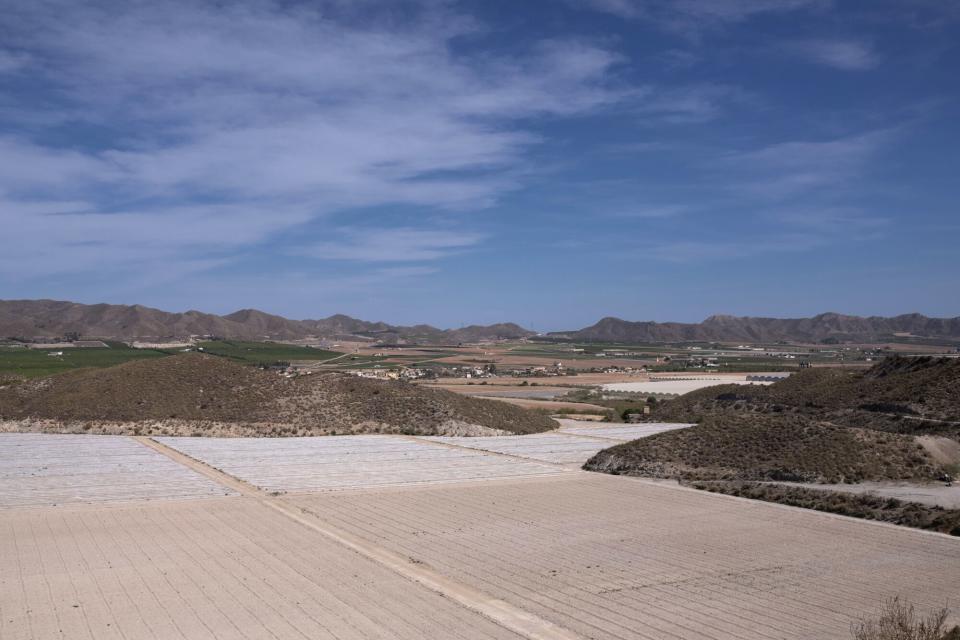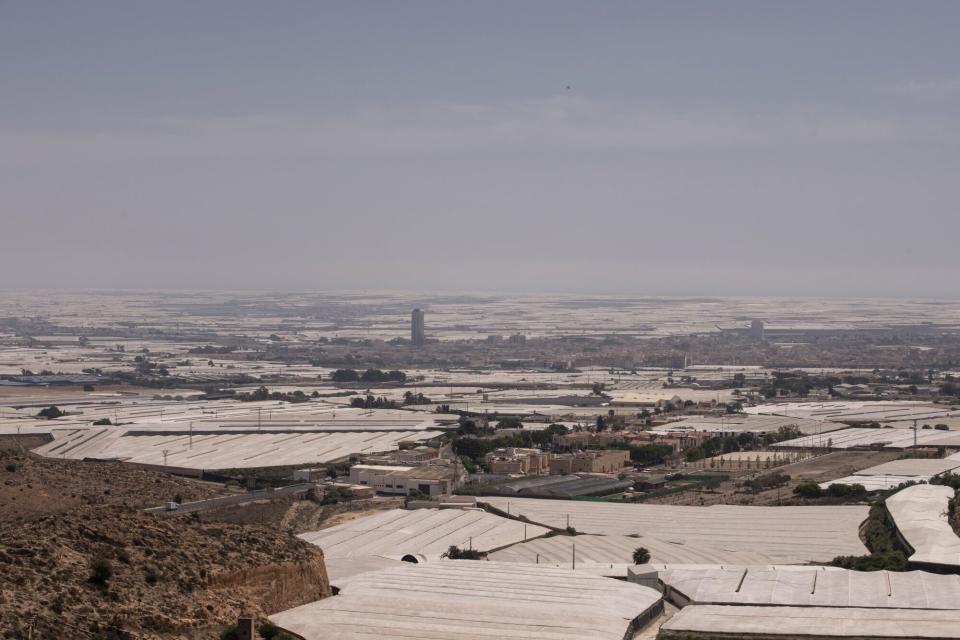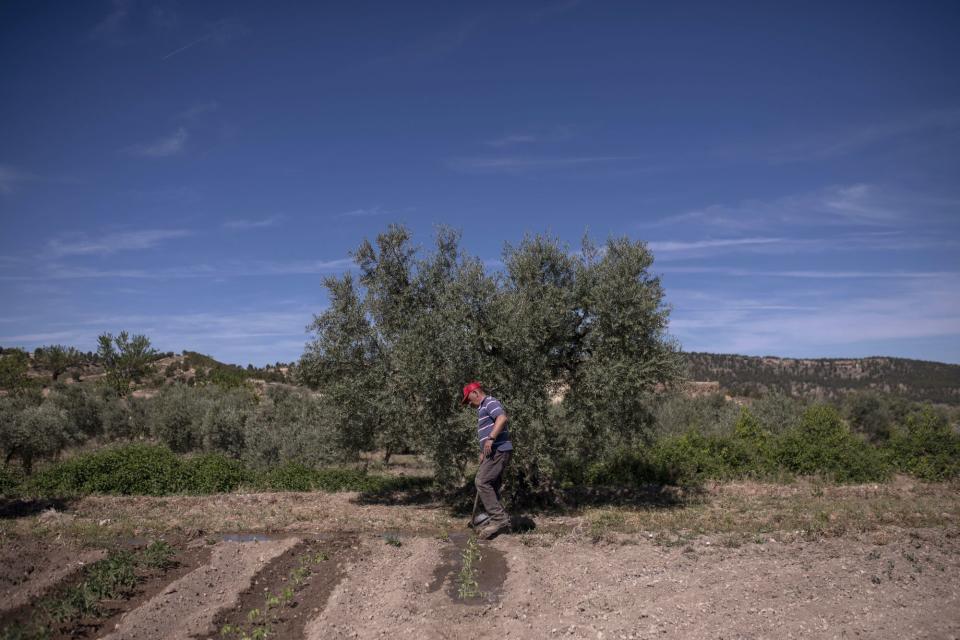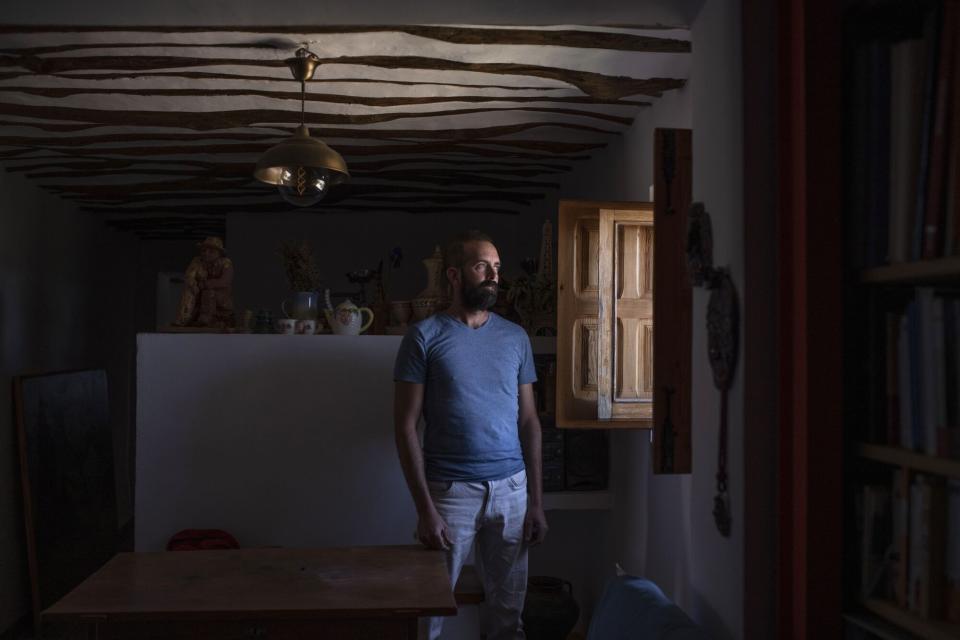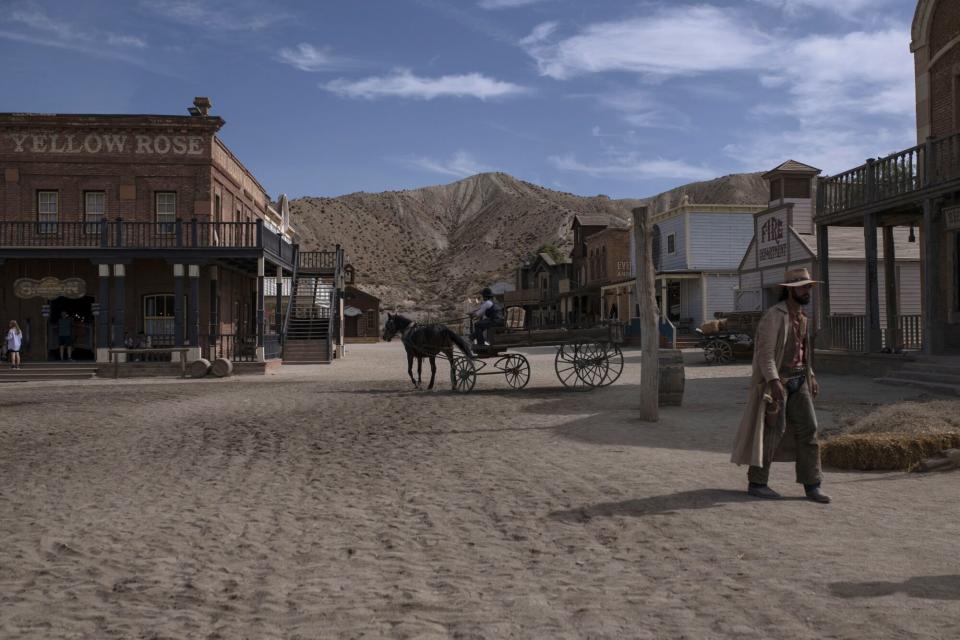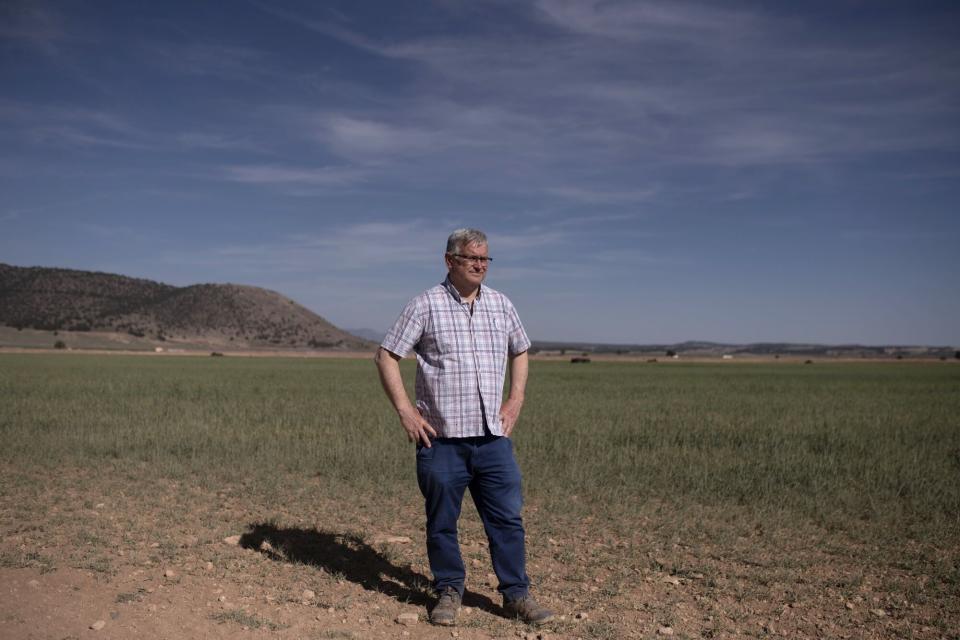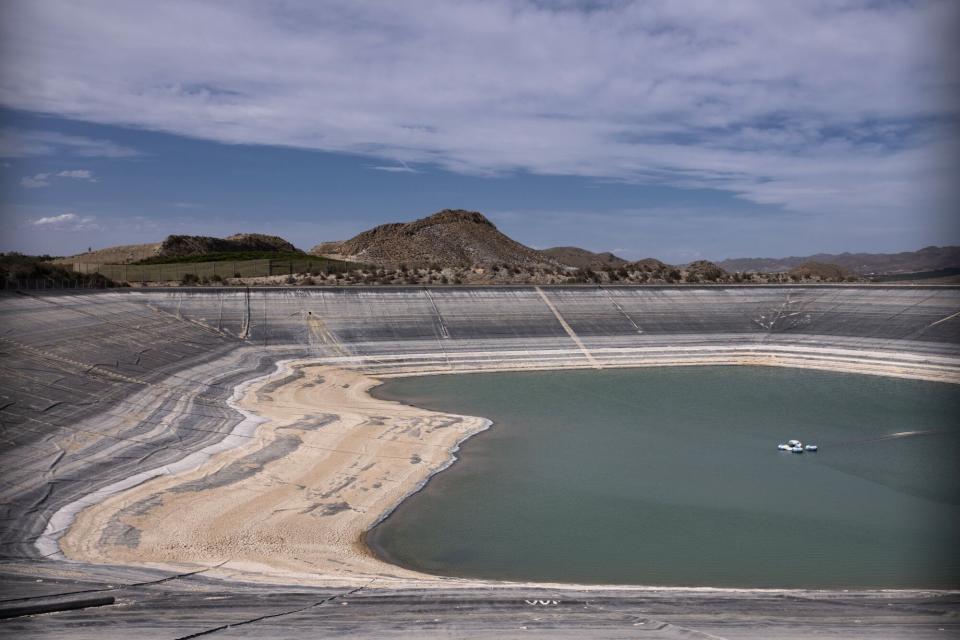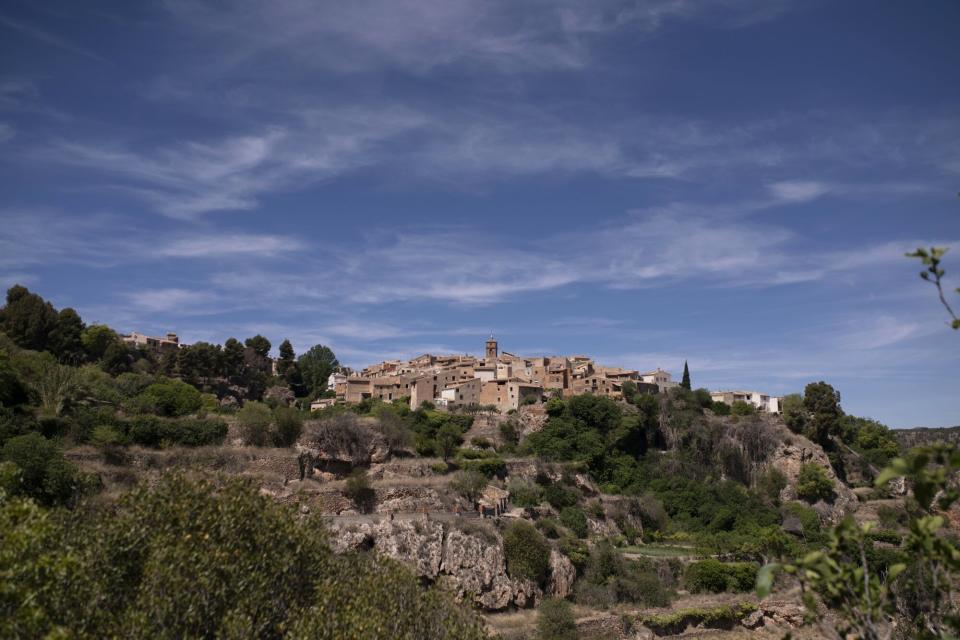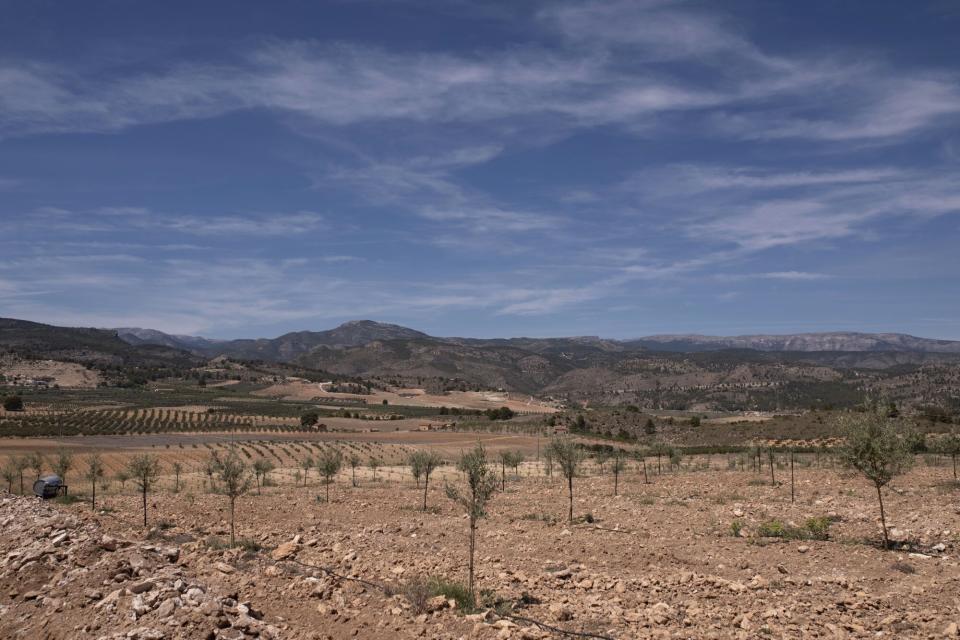Europe’s Drought-Riven Future Is Here, Decades Earlier Than Expected
(Bloomberg) -- A network of ditches dug in the Middle Ages has allowed farmers in the hillside hamlet of Letur in southern Spain to grow olive trees, tomatoes and onions in one of Europe’s most arid regions for centuries. Now the punishing drought that’s spreading across the continent is threatening even this ancient oasis.
Most Read from Bloomberg
Florida’s Money Man Threatens to Cut Ties With Bank of America, Wells Fargo
Yellen Says ‘We Have to Default’ on Something If Congress Fails
The intricate system has kept the village’s land moist and cool through wars, foreign invasions and natural disasters. But the 200 farmers that rely on it are starting to worry for the first time as water levels at many of Spain’s giant dams sink to unprecedented lows and canals built in the 1970s that turned the surrounding region into an agricultural powerhouse start to run dry.
Lea el reportaje en español
If the drought goes on much longer, Luis López, a 43-year-old olive farmer, fears that industrial farms nearby that use the modern irrigation system to grow water-intensive crops such as lettuce and watermelon might start tapping into Letur’s well-preserved supply.
“I feel like we are the last Gaul village in the Astérix comic strip,” said López, referring to the fictional character’s hometown that was the last to resist the Romans. “I’m worried that once they run out of water they will come for ours.”
Home to the European Union’s only desert, Spain has experienced drought more severely, and for longer, than the bloc’s other major economies. Its proximity to Africa puts it straight in the path of hot air currents as they make their way northwards from the Sahara desert. But the heat doesn’t stop in Spain; hotter and drier weather is becoming the norm across Europe. The water battle brewing in Letur is a harbinger of conflicts that will play out elsewhere, and whatever happens to Spain’s farming industry — a major source of groceries for its neighbors — will be felt throughout the region.
“Spain is Europe’s breadbasket and the lack of water there, the lack of agricultural production, is a matter of survival,” said Nathalie Hilmi, an environmental economist at Centre Scientifique de Monaco. “It becomes a financial problem too, because more money needs to be spent finding food.”
Multi-year droughts can be devastating because sectors such as agriculture don’t have time to recover, so impacts pile up season after season, growing exponentially. Spanish olive oil production — which accounts for 45% of the world’s supply — will likely be more than halved this season, while grains such as wheat and barley are projected to fall by as much as 60%, according to Gabriel Trenzado, director of Cooperativas Agro-alimentarias de España, a farming industry group.
Read more:• Record Spring Heat Almost Impossible Without Climate Change• Spain Unveils $2.4 Billion Emergency Drought Relief Package• Heat and Drought Force Europe to Accelerate Climate Adaptation• Drought Parches Crops Across Southern Europe for Second Year
The situation isn’t yet as dire in other parts of the EU, where the official forecast is for the grain harvest as a whole to rebound about 7% from last season. Precipitation in France, the bloc’s top grain producer, has improved since the winter dry spell, and crop ratings for the 2023 wheat harvest are running at the highest for this time in more than a decade. In some areas there’s even too much rain, with barley and sugar-beet plantings in parts of Germany delayed by their wettest March since 2001.
Farmers across the region don’t just have to contend with drought but also less predictable weather overall. Last year, Spain experienced a heat wave similar to the one that baked the country this April, until Storm Cyril brought an unusual drop in temperatures, leading to multimillion euro losses for fruit and nut producers. “The fact that there’s drought doesn’t mean it’s not raining, it means rains sometimes come unexpectedly,” Trenzado said. “Everything is very sensitive.”
Europe’s preparations for a drier future are struggling to keep pace with the rapidly changing climate. The continent has warmed nearly twice as fast as the rest of the world over the last three decades, according to the World Meteorological Organization, and the economic impact has been significant.
Record-low river levels have caused billions in losses from snarled freight passage. It’s also hurt electricity generation from hydropower and nuclear plants, adding to an energy shortage caused by Russia’s invasion of Ukraine and contributing to the worst cost-of-living crisis Europe has faced in generations. Drought-driven crop failures could send food prices higher still.
The diminished trickle into Europe’s lakes and seas also compounds environmental risks by raising water temperatures and harming ecosystems, according to the Copernicus Climate Change Service. And then there’s the higher probability of wildfire, which torched European landscapes three times the size of Luxembourg last year.
It’s the second year in a row of extremely dry and hot conditions for Europe’s southwest, driven by a pre-summer heat wave that’s started three months earlier than usual. Spain just experienced its warmest and driest April on record. Elsewhere, the snow that’s accumulated in the Alps, a key source of water for France and Italy, is the lowest in over a decade, exacerbating years of below-average rains and snowfall. Further north, Germany and the UK have experienced rain anomalies as severe as Spain’s.
The changes in weather match scientific projections for less precipitation and higher temperatures in Europe on a warmer planet, said Andrea Toreti, a senior researcher at the European Commission’s Joint Research Center, an independent scientific body that advises the bloc’s officials. But this level of drought was only expected to occur regularly in 2043. “If nothing is done, we expect that this event could occur almost every year,” he said.
In Italy, where a lack of water is choking the country’s most productive agricultural region, the crisis has become a government priority managed by a special unit led by Deputy Prime Minister Matteo Salvini. France, which this year suffered its longest winter rainless spell on record, has set a new target to cut water consumption 10% by the end of this decade.
“Last year’s drought was exceptional in comparison with what we had experienced, but it won’t be exceptional in comparison with what we will experience,” French President Emmanuel Macron said in a speech in March. “No one is saying this situation will improve.”
The Spanish government has scrambled to find solutions. Despite spending billions to improve its water-management system, Spain’s reservoirs are still at about half their capacity. In an emergency cabinet meeting on Thursday, officials greenlit a €2.2 billion package that includes tax breaks and aid for farmers, adding to measures already announced that will cost €22 billion.
Most controversially, the government will limit the amount of water used to irrigate crops. The move has angered farmers and emboldened conservative politicians ahead of local elections later this month that are seen as a bellwether for Prime Minister Pedro Sánchez’s prospects as he seeks re-election in December. Sánchez, who has pushed for stronger measures to counter climate change, has also clashed with right-wing lawmakers seeking to expand water rights for farmers in one of Europe’s most pristine wetlands, located in southern Spain.
Sánchez has acknowledged that there’s no easy answer. “The debate around drought will be at the heart of the political and territorial debate in our country for years to come,” he told lawmakers in April.
Competition for water access in Spain is already pitting various groups against each other: large agribusiness and small farmers, environmental activists and corporate lobbyists, local politicians and the central government.
The tensions are on display in Almería, a province two hours south of Letur that regularly records the highest temperatures in Europe. Its land used to be so dry and barren that spaghetti westerns, including The Good, the Bad and the Ugly starring Clint Eastwood, were filmed there. Everything changed in 1979 after the government built nearly 300 kilometers of canals and pipelines — known as the Tajo-Segura transfer — that brought water from the central plain into the southern desert.
More than four decades later, Almería’s fertile land supports so many greenhouses that the sea of plastic coverings can be seen from space. It has become the heartland of Spain’s €18 billion fresh fruit and vegetables sector. Farms deliver fruits which require large amounts of water to grow, such as oranges and lemons, to supermarket chains across Europe, all year round.
But that feat of engineering hasn’t inoculated the region’s water supply from the creeping drought. In Pulpí, a town in Almería, big farms have had to reduce cultivated areas, buy water from other towns and rent land further north with enough water access to maintain production. Two years ago the Negratín dam, which supplies most of Pulpí’s water, had to stop pumping as water levels plummeted.
Food growers in Pulpí have reacted angrily to the Spanish government’s plan to limit water taken from the Tajo-Segura transfer. “Without water Almería will go back decades,” said José Caparrós, an executive at a large farm who belongs to a group that manages the town’s irrigation system. “We need options to have access to water and feed the country.”
The backlash has extended across Spain’s food belt — encompassing the southeastern areas of Almería, Valencia and Murcia — with one lobby group claiming that restrictions could cost the industry nearly €6 billion and 15,000 jobs.
Some politicians have seized on the unhappiness in their campaigns for the May 28 local election. Ximo Puig, the president of Valencia and a member of Sánchez’s socialist party, has disagreed openly with the central government over the plan to restrict water access. Instead, he’s echoed the rhetoric of opposition candidates also courting the votes of farmers. If they win, it may increase resistance to Sánchez's environmental and water conservation policies ahead of December’s general election.
Alfonso Sánchez, a high school math teacher turned environmentalist who lives in Murcia, has seen how large-scale farming made possible by tapping underground water and nearby rivers remade his hometown of Caravaca de la Cruz. Hundreds of small growers had no choice but to sell their land to big firms or join them in producing water-hungry crops in the 1990s. Years of mechanized farming has reduced water resources by as much as 60% in the region, according to a report by Sánchez’s green group.
Rather than changing their practices and adapting to drier conditions in recent years, many farmers have drilled illegal boreholes to tap groundwater instead. Greenpeace estimates there are over 1 million unsanctioned wells across Spain, used mainly to irrigate crops. Sánchez is working to prevent more from popping up, but he fears the situation will only get worse as less water becomes available.
“We are swimming against the current,” he said. “The drought will only intensify this battle for water.”
--With assistance from Megan Durisin and Chiara Albanese.
(Updates with Spanish emergency relief package in 14th paragraph.)
Most Read from Bloomberg Businessweek
The Plot to Steal the Other Secret Inside a Can of Coca-Cola
AI Drug Discovery Is a $50 Billion Opportunity for Big Pharma
‘Nearshoring’ Push Is Fueling Tech Job Demand in Latin America
©2023 Bloomberg L.P.

 Yahoo News
Yahoo News 
